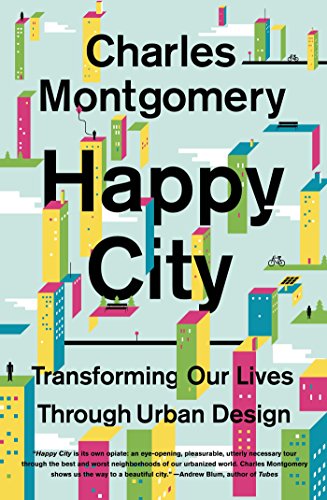Happy City by Charles Montgomery

The defining urban design trend of the past 50 years has been car-centric suburban sprawl. Modern sprawl is the product of an old design philosophy of strict zoning and strict separation of duties. This ideology was developed mainly during the industrial era, when urban cores were places of filth and squalor that needed to be contained.
In modern times, suburban sprawl and the “super-commuter” lifestyle are a social engineering disaster, responsible for many modern ills such as obesity, friendlessness, time scarcity, helicopter parenting, paranoid political ideologies, consumerist rat races, road-rage-induced chronic stress, chronic-stress-induced divorces, socially-stunted youth, low civic engagement, lack of easy access to amenities, rigid class and ethnic segregation, low class mobility, and overstretched infrastructure budgets. The main benefit of suburban sprawl - larger homes - provides little improvement to happiness due to hedonic adaptation. Even as household wealth has risen over the decades, self-reported happiness remains stagnant at best.
Social bonds are the greatest determinant of happiness. High density alone is not a magic solution to the social problems of sprawl, since many urban residents report feeling crowded yet solitary at the same time. Social bonds are strongest in urban layouts that lead to repeated spontaneous in-person encounters, but which also give people enough privacy to easily withdraw from public life when needed.
The book discusses several cities that managed to drastically improve their social capital and general welfare, focusing on Bogota, Vancouver, Copenhagen, New York, Portland, and Paris. Their strategies mainly involved changing sprawl into more pro-social layouts.
- Promote mixed-use developments so that residents can have shopping, services, and public spaces within walking distance.
- Ensure that parks and greenery of various sizes are widespread and easily visible. The sight of nature makes people less neurotic.
- Set aside space for car-free outdoor pedestrian plazas. Such places were the center of public life in virtually all pre-car towns.
- Ensure that gentrified neighborhoods stay affordable by insisting that low-cost housing options (eg small rental apartments) continue to exist.
- Set up practical alternatives to car commuting by maintaining sidewalks, bike paths, public buses and public trains.
- Encourage ride-share and bike-share programs that reduce total vehicle counts and free sporadic users from the burdens of ownership.
- Improve road safety by using road designs that force drivers to be slow, alert and careful (eg roundabouts instead of traffic lights).
- Scrap perverse tax incentives that entice developers to build on new lots rather than remodel existing lots.
